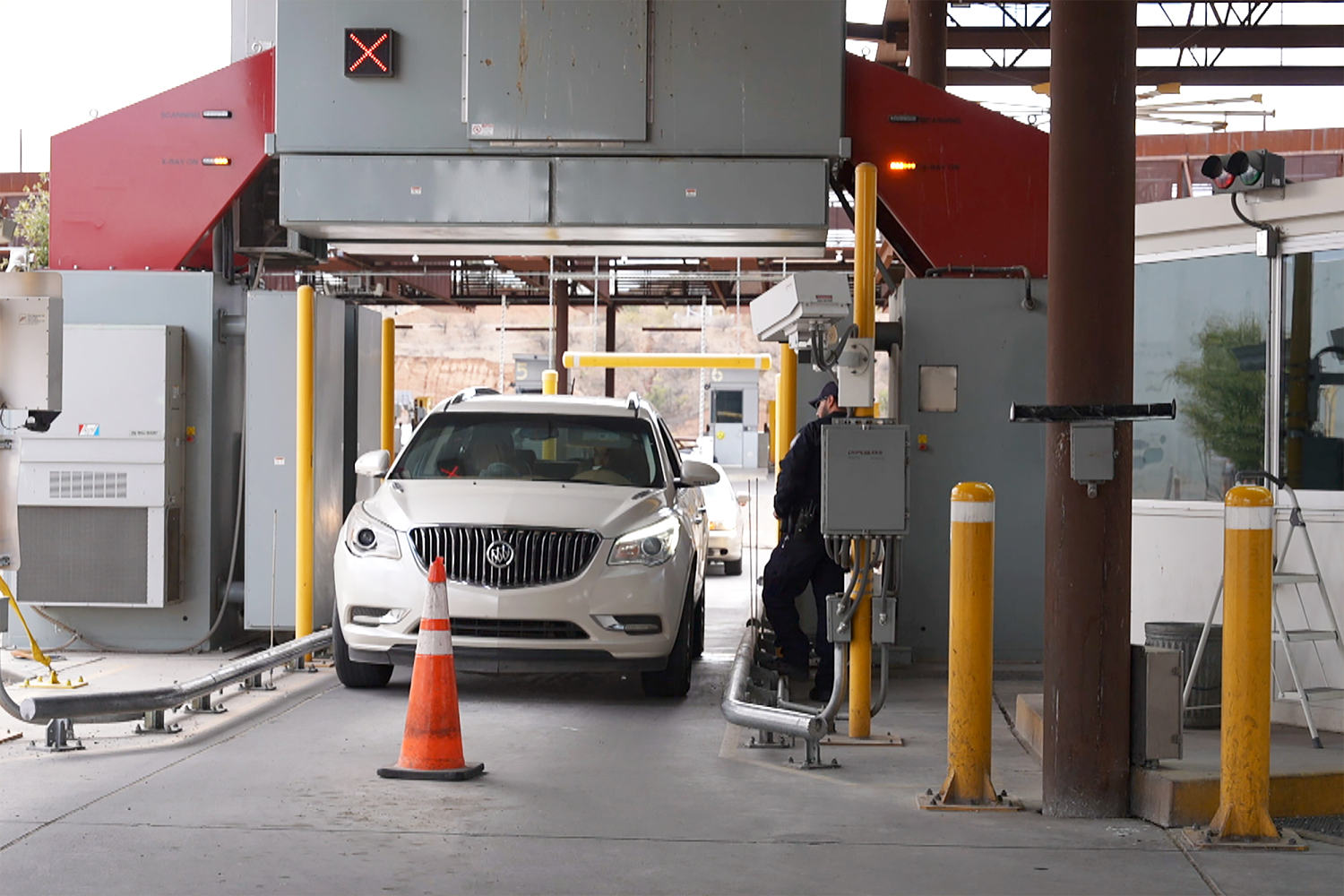
Speaking on background, a CBP official said the Biden administration would “provide funding for construction work projects to allow for the installation of NII systems purchased with prior year funds, in addition to the additional funding request.”
At the Mariposa Port of Entry in Nogales, where the new machines are being installed, Miller met with officers scanning the commercial trucks as they walked through the machines. But at the vast majority of vehicle border crossings in Nogales and elsewhere, officers still depend on their intuition to tell them when something looks awry.
Miller said artificial intelligence will make fentanyl scanning more efficient, and CBP wants to use it more.
With AI, officers will flag anomalies in trucks or changes since the last traffic stop in Mexico, such as different license plates, weight changes or different drivers.
Former Acting Homeland Security Secretary Kevin McAleenan served as CBP’s head in 2018 and 2019 when fentanyl trafficking began to increase.
“The vast majority of cross-border trade is legal. More than 98% did not violate US law. So they’re really looking for the proverbial needle in the haystack,” McAleenan said. “So what the AI can do is say if that image, which the officer is going to review, matches what’s supposed to be in that container.”
McAleenan now runs Pangiam, a company outside Washington, D.C., that received a $21.5 million award from CBP to develop new technology that can use artificial intelligence to detect anomalies in cross-border traffic.
When asked why he didn’t lead the use of the technology while at DHS, McAleenan said the technology takes many years to develop.
“We saw an increase. The efforts we made in 2018 reduced overdoses in 2019,” McAleenan said. But knowing what he knows now about fentanyl, “I would really emphasize staying on top of it and staying in front of it.”
With the increased use of AI, officers will still be responsible for making the final decisions about stopping and searching vehicles, but AI can increase the speed and number of vehicles searched. According to Miller, currently 20% of commercial vehicles are scanned and less than 5% of private vehicles. By the end of 2025, he wants CBP to be able to scan 40% of private vehicles and 70% of commercial vehicles.
If it saves lives, why not scan 100% of all vehicles?
Scanning every vehicle of the 1 million people who cross the U.S.-Mexico border every day would “shut down legitimate trade and travel,” Miller said.
Bereaved parents are calling on CBP to do more.
“I think the border should be closed. We’re a super highway,” said Teresa Guerrero of Tucson, Arizona, who lost her 31-year-old son Jacob in 2020 after taking cocaine she didn’t know was laced with fentanyl.
Guerrero is trying to put pictures of Jacob and two other young Arizonans who died from fentanyl on a billboard that motorists will pass on their way across the border into Tucson.
“It makes me sad every time I see a new name of someone who died,” he said, “especially in my home state.” “It just doesn’t make sense.”
